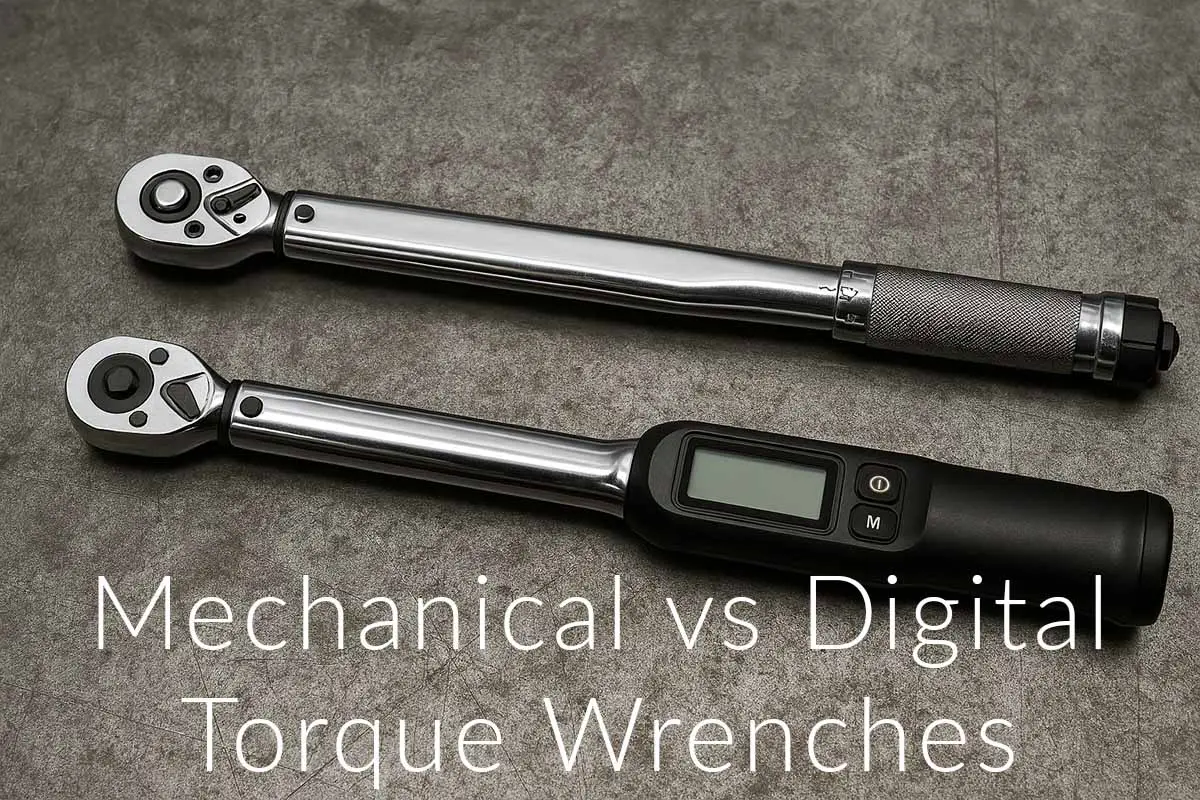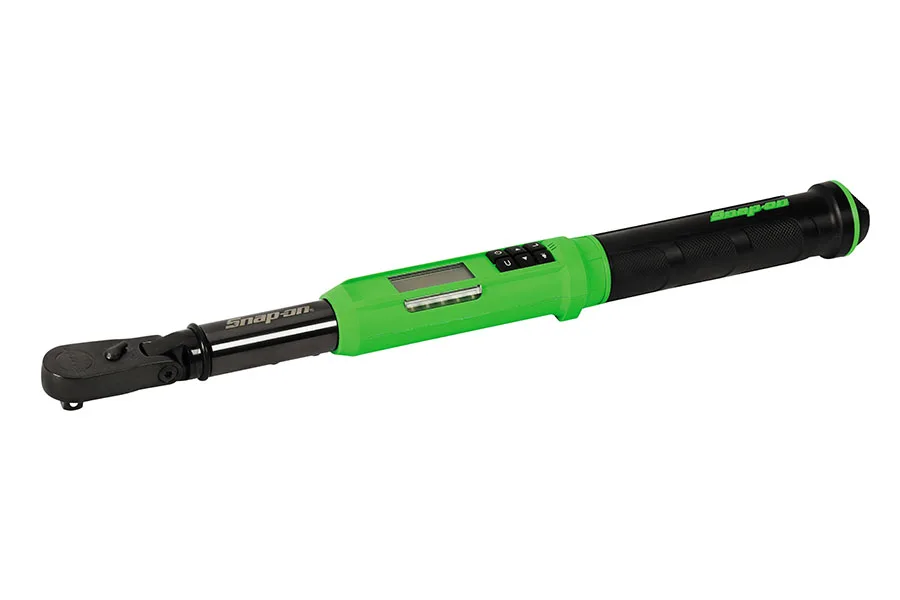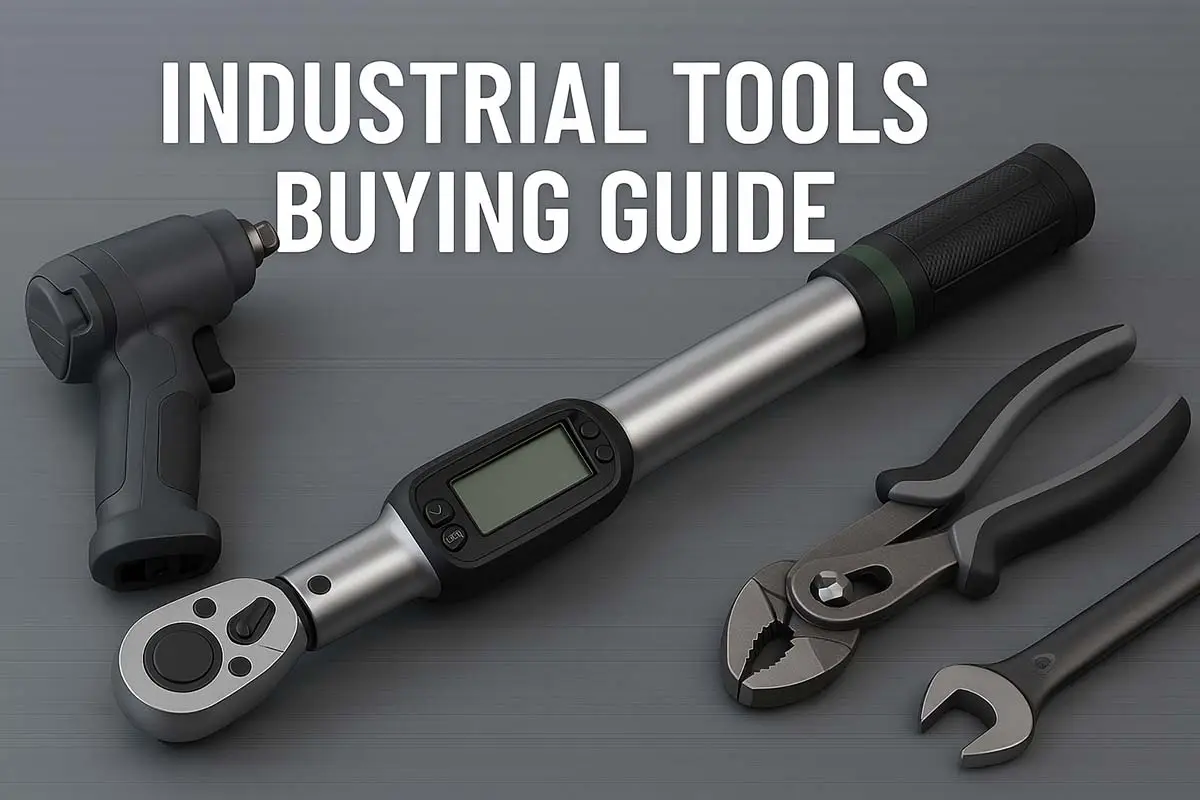Introduction
Whether you’re an auto mechanic, aerospace engineer, or weekend DIYer, you’ll eventually face the big question: Should I buy a digital or a mechanical torque wrench?
Torque wrenches may all look similar, but the difference between digital and mechanical models is significant. One offers cutting-edge accuracy and data storage, while the other provides simplicity and rugged reliability.
In this guide, we’ll compare digital vs. mechanical torque wrenches side by side – covering accuracy, cost, usability, durability, and the industries where each shines.
Understanding the Basics
Digital Torque Wrenches
A digital torque wrench uses an electronic sensor to measure torque and displays the value on an LCD screen. Many models offer memory storage, connectivity (Bluetooth or USB), and live feedback with sound, vibration, or LED lights.
Mechanical Torque Wrenches
A mechanical torque wrench (click, beam, or dial) uses physical mechanics to measure torque. The most common is the click-type, which emits a click when the set torque is reached.
Feature Comparison: Digital vs. Mechanical
| Feature | Digital Torque Wrench | Mechanical Torque Wrench |
|---|---|---|
| Accuracy | ± 0.5% to ± 1% (very high) | ± 2% to ± 4% (adequate for many uses) |
| Ease of Use | Easy to read with LCD & alerts | Requires user focus and experience |
| Connectivity | Bluetooth, USB, IoT integration | None |
| Data Logging | Can store hundreds of results | Manual record-keeping only |
| Durability | Sensitive to drops and moisture | Rugged, often more impact-resistant |
| Battery | Requires batteries or charging | No batteries needed |
| Price | Higher (premium investment) | More affordable options available |
| Calibration | Needs regular calibration; easy data tracking | Needs calibration; harder to track |
Advantages of Digital Torque Wrenches
- Superior Accuracy: As low as ± 0.5%.
- Traceability: Memory storage and data export for compliance.
- Feedback Systems: Audible, visual, and vibration alerts reduce errors.
- Modern Compliance: Meets ISO standards in aerospace, automotive, and defense.
Drawbacks of Digital Torque Wrenches
- Expensive compared to mechanical models.
- Require batteries or charging.
- Sensitive to moisture and accidental drops.
- Overkill for casual DIY users.
Advantages of Mechanical Torque Wrenches
- Affordable: Budget-friendly, especially for DIY users.
- Durable: Less affected by temperature, moisture, and drops.
- No Batteries Needed: Always ready for use.
- Variety of Types: Beam, click, and dial options.
Drawbacks of Mechanical Torque Wrenches
- Lower accuracy (± 2–4%).
- No data logging or digital feedback.
- More frequent calibration drift with heavy use.
- Click-type models can wear out unnoticed.
Which One Is Better for You?
Choose Digital If:
- You work in aerospace, automotive manufacturing, or energy where compliance and traceability are mandatory.
- You need extreme precision with live feedback.
- You want to store and export torque data.
Choose Mechanical If:
- You’re a DIY mechanic or small workshop owner.
- You prefer rugged tools without worrying about batteries.
- You want a cost-effective solution for occasional use.
Expert Insight
🔧 “Digital torque wrenches are the future, especially in compliance-heavy industries. But mechanical models will never disappear – they remain the workhorse for cost-sensitive and rugged environments.”
– James Hollister, Senior Tools Engineer, Automotive Industry
Interesting & Lesser-Known Facts
🔧 Interesting Fact: Some digital torque wrenches, like Atlas Copco’s STRwrench, can identify the operator via RFID login for accountability.
🔧 Lesser-Known Fact: The first torque wrenches in the 1930s were purely mechanical, and the design hasn’t changed much – proof of their enduring utility.
Digital vs. Mechanical Torque Wrenches FAQ
Want To Learn More About Torque Wrench?
Find out more information on torque wrenches in the following articles:
- The Ultimate Guide to Torque Wrenches
- How to Use a Torque Wrench in the Automotive Industry
- Automotive Torque Wrench Buying Guide 2025
- Best Digital Torque Wrench in 2025
- Top Torque Wrench Manufacturers Reviewed (2025 Edition)
- How to Calibrate a Torque Wrench: Step-by-Step Guide
- How to Set Up a Torque Wrench Correctly (Step‑by‑Step)
- How to Read a Torque Wrench Correctly?
- Torque Wrench Maintenance: How to Extend Its Life
- 5 Common Mistakes When Using a Torque Wrench
- The Future of Torque Wrenches: Smart Tools & Automation 2025
- Torque Wrenches in Aviation – Case Studies on Safety
- Torque Wrench Safety: Prevent Overtightening & Bolt Failures
- Torque Wrench Accuracy Explained | Understanding Tolerance in Practice
- Digital Torque Wrench Calibration – Step-by-Step Guide 2025
- Snap-On Digital Torque Wrenches (2025) – Premium Review
- Proto Torque Wrenches: Complete Buying Guide & Pro Review (2025 Edition)
- How to Choose the Right Torque Wrench for Your Job
Conclusion
So, digital vs. mechanical torque wrenches: which is better? The answer depends on your needs. For professional industries, a digital torque wrench offers unmatched accuracy and compliance features. For DIY or budget-conscious users, a mechanical torque wrench is still the most practical choice.
💬 Your Turn!
Do you prefer the reliability of mechanical torque wrenches or the precision of digital ones? Share your opinion in the comments – and don’t forget to pass this guide on to fellow tool enthusiasts and professionals.





